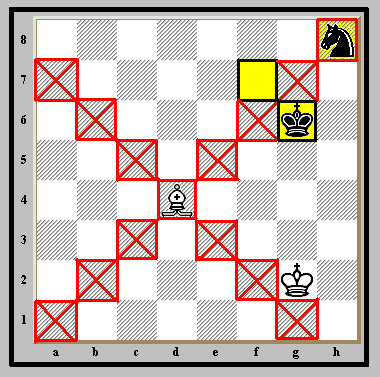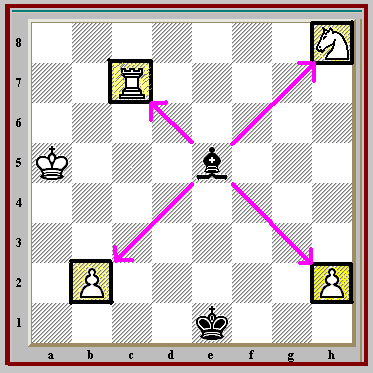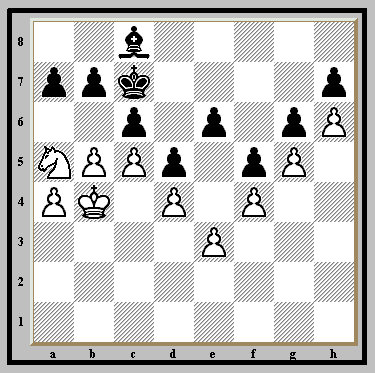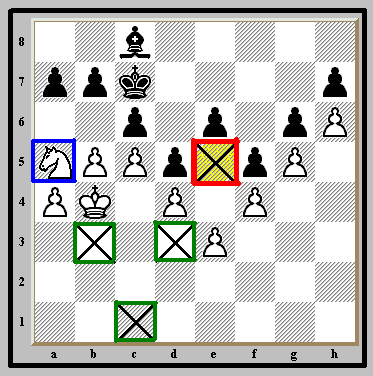All
the |
(Navigation bar
directly below.)
*******
© A.J. Goldsby, 2015.
(All rights reserved.)
****************
Click HERE
to see my
Chess Items.
****************
****************
Buy a book
from Amazon.com
(And help me out as well!)
****************
Click HERE
...
to see a list of the businesses that help to sponsor all of
my chess efforts.

"The Bishop" in Chess
The Bishop
(or "The Cardinals" of the
Chessboard.
& "Treachery and intrigue in the Royal Court.")
Click HERE to return to my Training Page.
Click HERE to return to my HOME Page.
________________________________________________________________
Click HERE to go to another site where the basics of chess are covered.
Click
HERE
to go to another site where the basics
of how the pieces move are covered.
The Bishop is the equivalent or the representative of the church officers in the Medieval Royal Court.
They used to wield tremendous power and exerted great influence in the scheme of things. Of course this was in many countries in Europe during the Middle Ages.
Some have commented that the Bishop moves obliquely to mimic its counterpart in the Royal circles. While this is an interesting observation, its not historically correct.
The Bishop
Look at the diagram below. It shows The Movement
(and
Capturing) powers of the Bishop at a glance.

Looking at the above diagram,
ALL the potential moves of the White
Bishop on d4 are all marked by the red "X's" on all the
squares that the Bishop could possibly move to. The White Bishop could also
capture any Black piece that landed on one of the squares marked by the
red
"X".
(They say a picture is worth a thousand words, and here that is true.) The first thing to remember is that a Bishop moves in a straight line.
The Bishop is always confined to a diagonal, that is to say ... a straight line of squares connected only by the corners.
In the picture above, the Bishop may move to any of the squares marked by a large "X."
If an enemy piece were sitting on any
of these squares,
the Bishop could capture it.
The other thing to note here is the superiority of The Bishop vs. The Knight, at least in the above diagram. The Bishop is controlling 13 squares, reaching from the center to both sides of the chess-board. The Knight only has one square, because he may not capture his own piece. (The Black King.) The two potential squares for the Black Knight are high-lighted in yellow.
{So The Bishop ALWAYS moves in a straight line and ALWAYS moves on its diagonal!}
(Take a close look at the diagram below.)

In
the picture above, The Black Bishop on the e5-square could capture FOUR
different
pieces. The Bishop could capture either of the White Pawns on b2 or
h2, the Bishop
could capture the White Rook on c7; and the Bishop could also
capture the
White Knight on h8.
***
(Notice I have given all the possible capture squares a bold, black border; and high-lighted them with yellow.)
Notice that the Black Bishop is still moving on the DIAGONALS. The Black Bishop could also MOVE to any of the empty squares along the path of the colored arrows.
This is not to say that the Bishop is always superior
to the Knight.
There are often situations where the Knight is vastly superior to
the Bishop.
The picture below is such a case.

Here the Knight is the vastly superior piece.
The Bishop is hemmed in by its own pawns, which is a very common occurrence.
If
the Knight were already on its ideal square, (The e5-square.); then the game
would be won for White.
How would you get the Knight to its ideal square?

The series of "X’s" show the most likely route
that the Knight
might take in trying to reach its ideal square.

Look at the above picture one more time.
A few observations are now in order:
( The properties of The Bishop. )
#1.) The Bishop moves obliquely along the diagonals.
The Bishop also captures exactly the way it moves.
(Remember: ONLY
The Knight can jump over other pieces.)
# 2.) The Bishop is a LONG - RANGE piece. It can move all the way across the board in one move.
# 3.) The Bishop needs OPEN LINES along the intended diagonal(s) to be effective!
# 4.) The Bishop is not effective when hemmed in by its own pawns.
***
That's it for The Bishop. All you have to remember for this
piece is that it moves and captures on a diagonal.
You have
two Bishops at the
start of each game. One is for the light squares and one is for the dark
squares.
And that's all for The Bishop.
Copyright (c) LM A.J. Goldsby I
Copyright (c) A.J. Goldsby, 1975-2014.
Copyright © A.J. Goldsby, 2015. All rights reserved.
(Page last updated: December 23rd, 2003.)
************************************************************************************
Click HERE to go to the next page in my Chess Training Course.
Its called: "The Knight" in Chess.